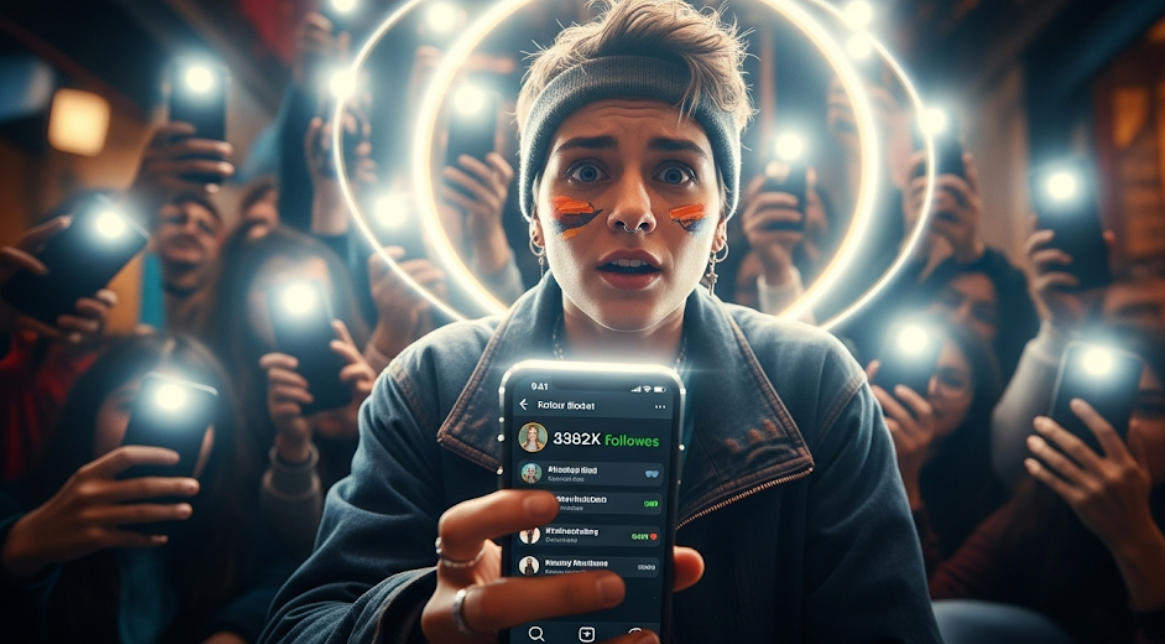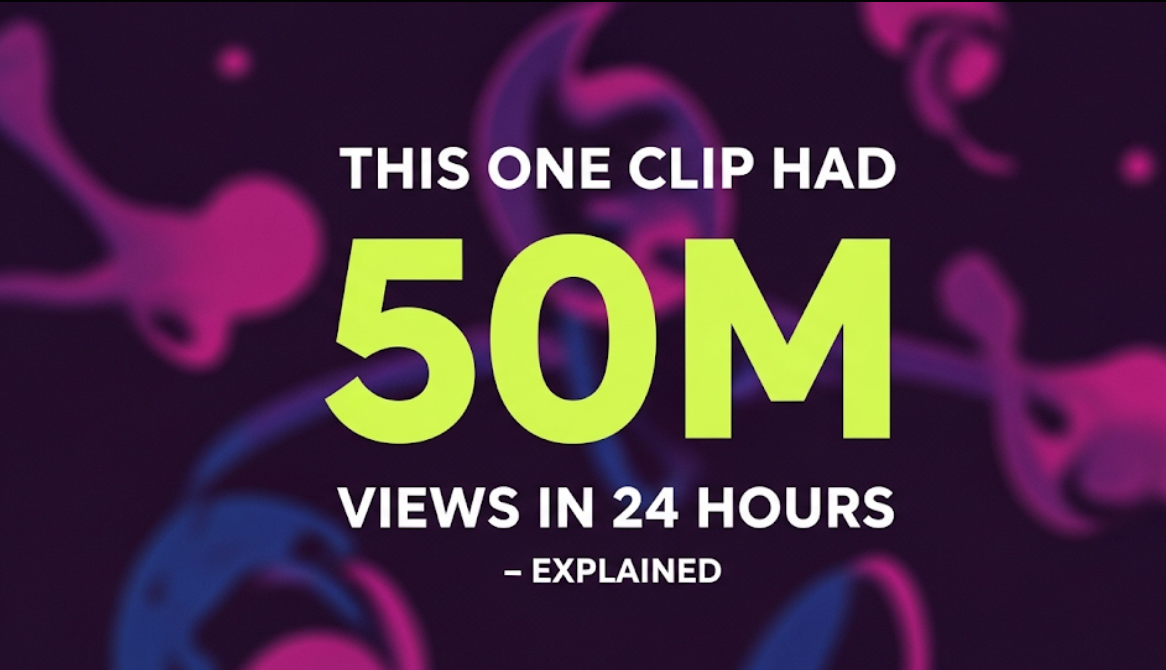Someone—or something—faintly floats up from the ether of total anonymity and one featureless day, as if shot out of a weird cannon situated on the dark side of the moon, it suddenly blinks across every sector of awareness simultaneously. This Sudden Switch Always Feels Rhythmic: A seed of a spark turns into a meme-able moment, a newly repeatable format emerges every time it comes back around, celebrities and brands jump on board, and next thing you know your entire feed is resonating the same sound or pose or phrase. We are currently watching that cycle unfold in real time with the most recent situation before our eyes (à la Huda Mustafa — “I am a mommy” on Love Island USA, Season 7) which went from a two-second TV cut to cross-platform shorthand faster than you can say “reality television really do be molding culture”. The video’s ascension is proof that celebrity today can be created not just by human demand but by the perfect storm of algorithms, fan labor and smart remixes.
Inversion of the Pyramid Scheme — Why are these “latest obsessions” so viral and what does it beg for you to learn as a Content Creator or as a Brand or just an everyday User. To delve deeper, read this.
1) The Spark — A Brief, Shareable Moment
You see, viral obsessions don’t begin broadly; they are specific. One moment calls another a simple sentence, face, soundbite or visual beat brings it to a clean capture point for the internet. And Huda doing a jerky side-to-side head shake to the camera and speaking in hesitant sentences like “I’m a mommy” landed on “how did I get here haha/social anxiety” perfectly. Nick’s baffled face in that same scene established an instant meme format, just urging the audience to fill in their own contexts (“when the team project wants to know who did the work”). Official accounts and landmarks were hopping on the hashtag within hours (yes, even the Empire State Building got in on it), pushing the clip far beyond the show’s usual reach.
Today’s micro-spark shows the same DNA.
The most basic caption format you can imagine in a TikTok clip — “Sorry I’m late, [X] was throwing a fit” centers then slices with the reveal of an ending so predictable it could be personalized instantaneously by anyone. A hint of celeb adoption (Kevin Bacon and Kyra Sedgwick) turned a joyful couple gag into mass-participation fare.
And then there are the aging filters… a tantalizingly easy (and sexy) human-before/after hook that almost begs for people to comment—and thereby engage—because the “reveal” is part of its very format.
Create points:
- Search for one-line hooks
- Details on a beat
- Combine this with a face that captures the moment or some shocking twist and, boom, you are well on your way to making memes
- Create captions which serve as fill-in-the-blank opportunities for others
2) The Structure: Made to be Remixed Ad Infinitum
Obsession doesn’t go viral because a moment is good; it goes viral because it’s convenient to repurpose. A trend is culture in the shape of a template — less than a 5-second sound, caption shell… shot list, motion pattern — with referential quality. The “I am a mommy” audio is essentially plug-and-play voiceover; only two shots and a cheeky payoff are needed for “Throwing a Fit”; the twist comes pre-packaged with aging filters.
Which is why sometimes, the format rather than the person becomes a celebrity. Even super famous artists like Keke Palmer know a career touchpoint can become meme grammar on its own, where the meme outruns (and outlives) the original source.
Create points:
- If you want in, model the format faithfully on first pass (sound alike, cuts timing, caption style)
- Change a variable (location, attire, prop) to give the viewer another perspective of your previous shot
- Where possible, go under 15 seconds – shorter content loops better and drives higher watch-through rates
3) The Algorithm: From Illusion to Illusion
This is rewarded on platforms for completion rates, rewatches, comment velocity — apply that same principle in your heavy hitting content. A watch-again moment — “Did they just say that?” — is algorithm candy. Debate-driven clips (“Is that realistic? Is it fair?”), such as the conversation following Huda’s reveal about having a child on a dating show, are met with additional comments that only serve to facilitate distribution — even if not all of the discourse is strictly positive.
This multiplication increases on videos with aging filters: viewers stop to stare at faces and then step back inside for more frames. Those micro-actions actually increase dwell time, a prized metric for most feeds these days. Professionals caution that the outputs of the tool are not nuanced — dermatologists assert that the filters omit huge factors such as genetics and sun exposure, but no one cares how accurate they are when it comes to appeasing an algorithm.

Create points:
- Write for loops: come around to where you started in the end or with a gotcha right at the second
- Plant reply-able questions in captions. Example: “OK but does this actually fit me?”
- Promote duets/stitches: “This is not how you do it”, “Say you feel me without saying that”
4) The Social Proof: Celeb and Brand Buy-Ins
If there is one thing that can legitimize a meme, it is mass celebrity imitation. No one was more aware of this than the fun-loving real-life couple Kevin Bacon and Kyra Sedgwick, whose airport gag read quite simply: This is safe to try — and funny. The legacy media coverage then follows, turning a niche in-joke into something almost internet-common.
Brands add another layer of evidence: structured whimsy. The joke reaches mainstream when a major brand or landmark account posts their own take on the “I am a mommy” line. It became a key meme moment of Huda’s arc when a skyscraper does the same thing: Once a high-rise participates, your clip is no longer just reality TV detritus; it’s culture.
Create points:
- Brands — Go in as a fan, not a hijacker and gently enter the name of the original meme if you decide to play along
- Post when you see the upswing, not the peak — it will look like corporate cosplay coming in too late
- Give credit or partner with the original creators — all memes come from somewhere (even if the format is basic)
5) The Psychology: Why We Can’t Get Enough
Two forces keep obsessions sticky:
Relatability with a twist. “I am a mommy” speaks to class, and also identity, and expectation — the kinds of things you have a thousand opinions on as soon as it comes up. “Throwing a Fit” lets couples flex inside jokes. Aging apps are playing to our deep-seated fear of time and looks, essentially. Therapists caution that reinforcing the idea of constantly judging others based on looks makes for bad social cues, but the impulse to compare still resonates — especially if we can disguise it as funny.
Low friction participation. Easy-to-try memes go viral. You do not need a studio, you do not need proper lighting — you simply need your phone and the trending sound along with some captions. This accessibility gives culture-making over to the crowd.
Create points:
- Give viewers a job (a line to lip sync, a possibility to gulp, reveal)
- Punch them with “I could do that” energy — then make them want to do it NOW (trending music, live event, limited time)
6) The Backlash: When Fame Grows Faster Than the World We Came From
With speed comes scrutiny. The criticism on Huda’s moment was followed by questions about motives and motherhood: A reminder that virality might bring an instant audience but not an iota of empathy instantly. The internet age is so rarely interested in nuance; it wants to know what side you are on, if not monetize any outrage. But for aging filters, experts warn that viral comparisons might play into a larger narrative to damage psyche and compel the creators to chase engagement at their own peril.
Create points (safety & sanity):
- For comments: disable on some of your posts (or just by topic), and pin the house rules to your profile
- Platform does not equal peer group; a hundred strangers do not know your story
- Especially if a trend is poking at identity, health, or sensitive life roles, have pre-decided boundaries on what you will and won’t joke about
7) The Life Cycle: Four Stages Obsessions Go Through
Discovery – A micro-moment escapes its initial habitat. The feed is seeded with fan edits and subtitled clips. (Clip excerpts from Love Island; first aging filter reveals)
Format Lock: The community reaches a standard — be it the canonical sound, caption structure, or two-shot reveal (“Throwing a Fit”).
Cross-Over: Celebs, official accounts, brands and all… Mainstream press coverage; celeb × brand = ideal amplification.
Mutation or Fade — The template breaks away (parodies, reverses), or the next spark takes focus. The conversation on mental health and body image seem to be doing the same for face-changing trends.
Create points:
- Enter during Format Lock to get least risk and maximum visibility
- Mutate the template (genre mashups, cross-language subs, IRL stunts)!
8) The Playbook: Riding (or Starting) the Next Obsession
For creators:
- Speed > Perfection. Write your first version fast, iterate later
- Anchor in a feeling. It may be one of: surprise, pride, petty, awe — pick one and architect to it
- Engineer replies. Challenge viewers to duet/stitch with a set condition (“Only use thrifted items”, “Do it in one shot”)
- Pin the origin. If you started it, just upload a blank “template” version so others can use the sound/caption as well
For brands:
- Person > Product. Put a human on camera. Internet fascinations are social, not catalogs
- Be additive. Add a smart twist (local landmark, obscure knowledge, off-the-wall prop) instead of echoing the base format
- Respect the room. If a trend exists in the realm of sensitive topics (age, parenting, grief), be careful — or steer clear
For all who watch (and for the unexpectedly viral):
- Get your handles and brand on every platform while the process is easy, fast, free and get all your traffic into one place!
- Share some context — relate to why you said/did the thing in your own words, you can frame the narrative
- Put those DMs on protect if you must, as well as your mental health
9) Case Study in the Wild: Snapshots of Current Obsessions
Love Island USA — “I Am a Mommy” (Season 7)
Why it worked: A quotable line + reaction face = instant meme grammar How it scaled: Official accounts and celebrities then started participating (amplification part); think “reaction to reveal” clips, location-based riffs and caption swaps Friction: Motherhood and reality TV controversy — comments affect reach
Airport Edition and Beyond of “Throwing a Fit”
Why it worked: Because everybody can tape a two-shot visual gag How it scaled: Celebrity couple participation lent itself to date-night friendliness and brand-safety; viewers also went crazy for the wink-at-the-camera domesticity
Reverse-Aging Filters (e.g. “How old do I look?”)
Why it worked: Natural reveal + stakes of identity; faces you literally stop scrolling for How it scaled: Pop music in-jokes + music cues + duet culture Bias alert: Results are per the whims of algorithms and may not be predictive and feedback loops can be vicious; creators continue doing it because follower spikes are real
10) Conclusion: Stardom Is Not a Spark of Genius, But a System
Today, it is all too tempting to see this obsession with virality as a strike of lightning. But once you have seen the system — spark, template, algorithmic incentives, social proof and psychological hooks — then you can see where the next craze must restart from and prepare to meet it.
At its most sublime, this contraption can condense forgotten cries into common mirth. A phrase said on a reality show becomes a worldwide meme. The couple joke gone viral becomes every couple’s universal language. At worst, this same machine teaches us to scrutinize the faces, lives, and identities of others with an unkind microscope.
And so the lens to have closest at hand when your feed crowns a new obsession tomorrow:
Like a checklist for the next breakout, figure out how to see it:
- Was there an incredible beat (quote, face, reveal) in more detail than any other?
- Is the moment replicable at all with a cell phone within a minute?
- Does it encourage response, dueting, or some other kind of participation?
- Are celebs/official accounts beginning to get in on the act?
- Is this trend going to be detrimental or beneficial for the people within it — what is your moral compass?
As always, the internet will simply find its new crush. As it becomes increasingly easier — more automated, convenient — you may be a creator or business riding that wave without just escalating the chaos: and you can do so by introducing delight, honoring the humanness present, and remixing these trends cautiously.






